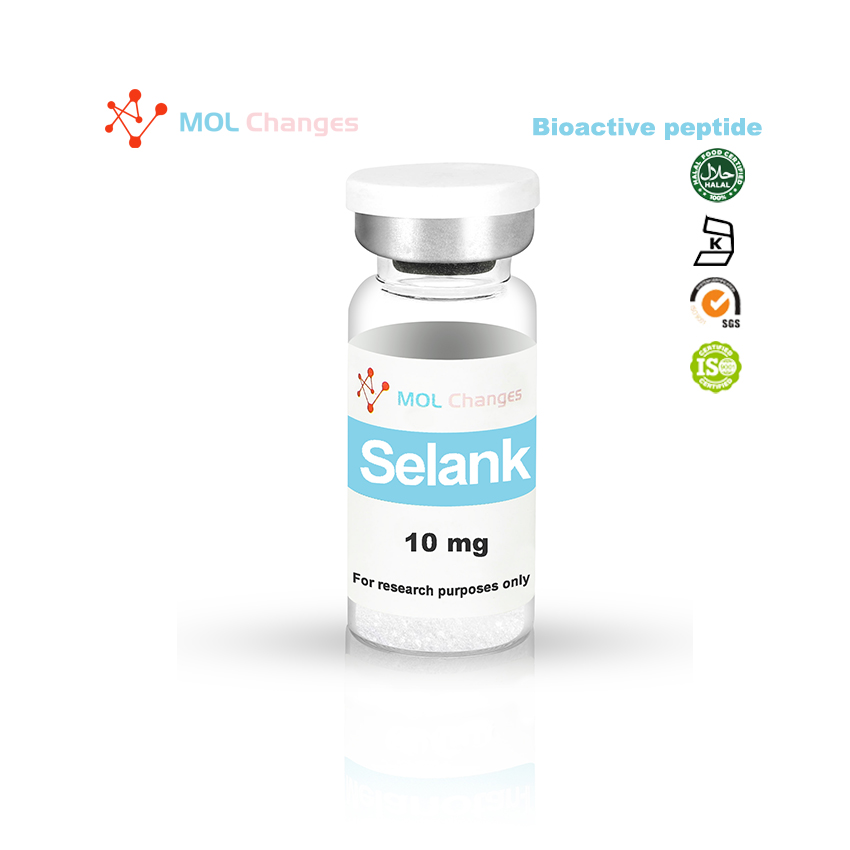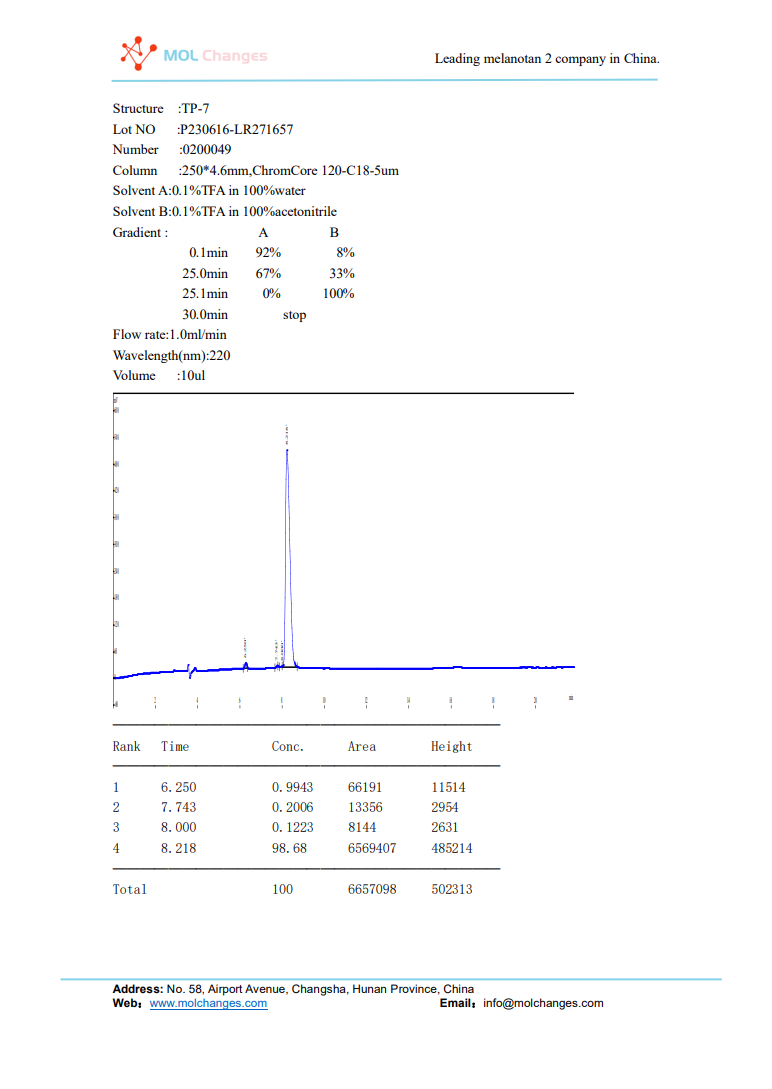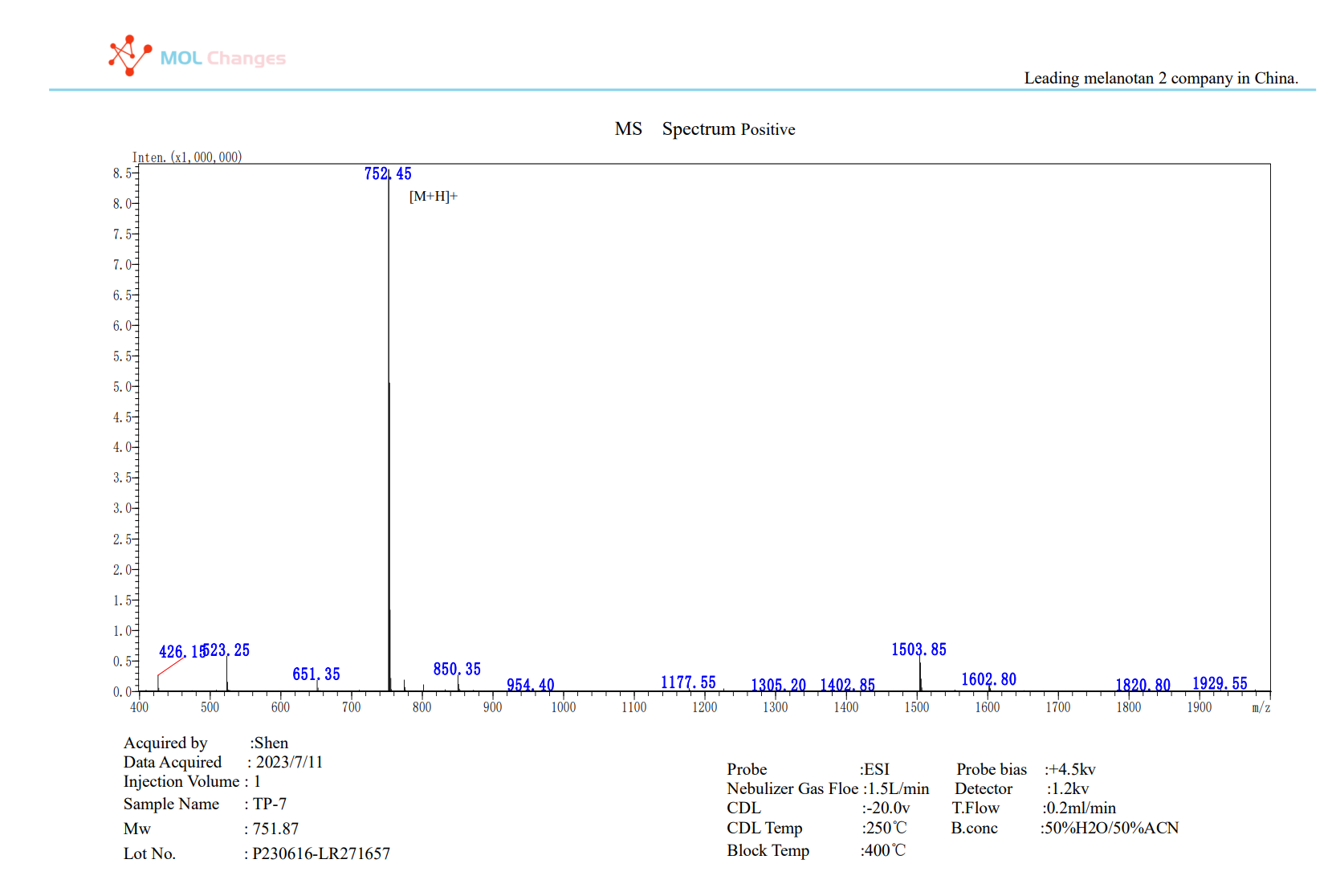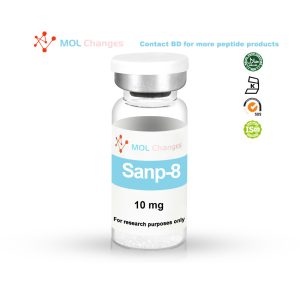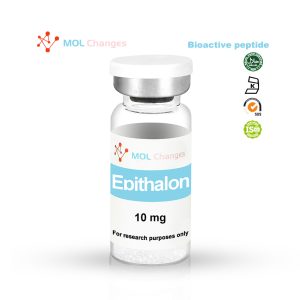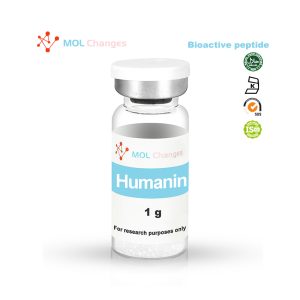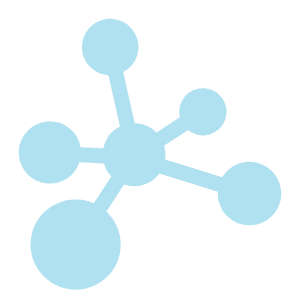
제품 정보 탐색
셀랭크 구조
- 시퀀스:Thr-Lys-Pro-Arg-Pro-Gly-Pro
- CAS 번호:129954-34-3
- 분자 공식:C33H57N11O9
- 분자량: 751.887 g/mol
셀랭크가 무엇인가요?
셀란크는 러시아에서 개발된 짧은 펩타이드로 친지적 및 불안 완화 특성을 가지고 있습니다. IL-6, T-헬퍼 세포, 모노아민 신경전달물질 및 뇌유래신경영양인자(BDNF)를 조절하는 면역조절 펩타이드인 천연 터프신의 합성 유사체입니다. 사실 셀란크와 터프신은 본질적으로 동일하지만, 셀란크는 사슬에 4개의 아미노산이 추가되어 있어 대사 안정성과 반감기가 더 길다는 점이 다릅니다.
셀랭크 효과
GABA 신경전달물질 관련 유전자에 기반한 셀랭크 불안 효과
러시아 분자유전학 연구소의 아나스타샤 볼코바 박사는 "수많은 임상 연구에 따르면 셀랑크는 불안 장애 치료에 강력한 불안 완화 및 신경 보호 효과가 있으며, 셀랑크의 임상 효과는 벤조디아제핀과 같은 고전적인 불안 완화 약물과 유사하며, 이는 GABAA 수용체의 억제 효과를 강화하는 변종 조절제로서 GABAA의 억제 효과를 강화합니다."라고 말했습니다. 셀란크의 효과에는 불안감 감소, 기분 개선, 스트레스 수준 감소, 기억력과 학습에 긍정적인 영향이 포함됩니다. 벤조디아제핀과 마찬가지로 저용량의 셀란크는 진정 효과가 있습니다. 벤조디아제핀과 달리 셀랑크는 습관을 형성하지 않으며 금단이나 기억상실 증상을 일으키지 않는 것으로 보입니다.
쥐를 대상으로 한 연구에 따르면 GABA 신호에 어떤 식으로든 관여하는 것으로 알려진 84개의 유전자 중 7개 유전자는 셀랭크에 의해 강력하게 조절되고 45개 유전자는 펩타이드 투여 후 발현에 약간의 변화가 있는 것으로 나타났습니다. 전체적으로 52개의 유전자가 셀랭크에 의해 어느 정도 영향을 받는 것으로 나타났습니다. 이러한 결과는 셀랭크가 신경세포의 유전자 발현에 직접적으로 영향을 미칠 수 있으며, GABA 수용체의 GABA 친화성을 변화시킴으로써 그 효과를 발휘할 가능성이 있음을 시사합니다. 이러한 수용체 친화성의 변화는 셀란크가 벤조디아제핀 및 기타 GABA 수용체 작용제와 상승적으로 작용하는 이유를 설명할 수 있습니다.
쥐를 대상으로 한 연구에 따르면 셀란크와 벤조디아제핀을 단독으로 사용할 경우 불안, 특히 범불안장애에 비슷한 효과가 있는 것으로 나타났습니다. 셀란크가 벤조디아제핀보다 불안 수준을 낮추는 데 약간 유리할 수 있지만, 예측할 수 없는 만성 경증 스트레스를 치료하는 데는 두 가지 치료법을 함께 사용하는 것이 가장 좋은 방법인 것 같습니다.
셀란크의 GABA 수용체에 대한 효과는 펩타이드가 엔케팔린 분해에 미치는 영향에 의해 부분적으로 조절될 수 있습니다. 실험에 따르면 불안 장애와 공포증이 있는 사람은 전반적으로 불안할 때 혈중 엔케팔리나아제 활성이 증가하며, 그 결과 반감기가 짧은 엔케팔린을 생성하는 것으로 나타났습니다. 셀랑크는 엔케팔리나아제를 억제하여 엔케팔린 분해를 방지함으로써 이 효소 경로를 재설정하고 신체의 천연 불안 완화 펩타이드를 보호하는 데 도움을 줄 수 있습니다. 불안에 취약한 생쥐를 대상으로 한 연구에 따르면 셀란크의 효과는 적어도 부분적으로는 엔케팔린 분해를 예방하기 때문이라는 가설을 뒷받침합니다.
셀란크와 불안의 면역 체계
우울증 환자를 대상으로 한 연구에 따르면 셀란크는 염증성 사이토카인 IL-6의 생성을 담당하는 유전자를 억제하는 것으로 나타났습니다. 흥미롭게도 이 효과는 우울증 환자에게서만 나타나며 건강한 사람에게는 나타나지 않는 것으로 보입니다. 이는 불안이 피로, 두통, 두근거림, 고혈압, 신경통, 우울증과 관련된 심각한 질환인 불안 약화 장애를 앓고 있는 사람들을 치료하는 데 셀란크가 유용할 수 있음을 시사합니다.
셀랑크를 벤조디아제핀과 같은 표준 불안 완화 치료제와 비교했을 때, 두 치료제는 불안을 줄이는 데 비슷한 효과를 보였지만 피로와 통증과 같은 쇠약 증상에는 셀랑크만 영향을 미쳤습니다. 이러한 효과의 일부는 셀랑크의 IL-6 발현 조절 능력 때문일 수 있고, 일부는 펩타이드가 체내 천연 진통제 엔케팔린의 분해 속도를 변화시키는 능력 때문일 수 있습니다.
쥐를 대상으로 한 셀랭크 테스트에 따르면 펩타이드는 염증 과정에 관여하는 약 34개의 유전자의 발현을 조절하는 것으로 나타났습니다. 이러한 유전자는 케모카인, 사이토카인 및 두 가지 모두에 대한 수용체에 영향을 미칩니다. 특히 셀랑크는 면역 체계 발달과 밀접한 관련이 있는 유전자 Bcl6의 발현을 변화시키는 것으로 밝혀졌습니다. 이 연구는 셀란크가 매우 복잡한 생물학적 영향을 미친다는 사실을 밝혀냈으며, 면역 체계가 어떻게 발달하는지에 대한 이해를 심화시키는 데 도움이 될 수 있습니다.
셀랑크와 심지어 셀랑크 조각은 마우스 비장에서 C3, CAsp1, Il2rf 및 Xcr1의 유전자 발현을 일시적으로 변화시키는 것으로 나타났습니다. 셀랑크는 이러한 유전자에 영향을 미침으로써 면역 체계의 균형을 변화시켜 염증을 조절할 수 있습니다.
셀랭크 메모리 및 학습 연구
불안과 학습/기억력 사이에는 오랫동안 상관관계가 있어 왔습니다. 불안이 증가하면 기억을 떠올리거나 새로운 정보를 저장하는 능력이 저하되는 음의 상관관계가 있습니다. 기존의 불안 치료는 셀랭크와 마찬가지로 이러한 효과를 줄일 수 있지만, 셀랭크는 불안이 인지 기능에 미치는 영향을 줄이는 것 이상의 역할을 하는 것으로 보입니다. 셀랭크가 실제로 인지 기능을 직접적으로 향상시킨다고 믿을 만한 충분한 이유가 있습니다.
쥐에게 음식 보상으로 훈련을 시키고 식염수 또는 셀랑크를 주입한 연구에 따르면 셀랑크는 기억 흔적의 안정성을 개선하여 기억 저장 과정을 향상시키는 것으로 나타났습니다. 특히 이러한 효과는 쥐의 불안 수준과 관계없이 나타나 펩타이드의 효과가 단순히 스트레스와 관련된 기억력 결손을 줄이는 것 이상의 효과가 있음을 시사합니다.
셀랭크는 해마에서 많은 유전자의 발현에 영향을 미쳐 기억력을 변화시킬 수 있는 것으로 보입니다. 쥐를 대상으로 한 연구에 따르면 셀랑크를 비강 내 투여한 후 36가지 유전자의 mRNA 수준이 변화하는 것으로 나타났습니다. 대부분의 유전자는 원형질막과 관련된 단백질을 암호화하므로 학습과 기억의 이온 의존적 과정을 조절할 수 있습니다. 셀링크가 기억과 학습을 개선하는 메커니즘을 이해하기 위해서는 많은 연구가 필요하지만, 이 연구는 셀링크가 뉴런의 기능 방식을 변화시켜 기억을 형성하고 접근하는 것을 더 쉽게 만든다는 흥미로운 초기 단서를 제공합니다.
이 연구는 셀란크가 뇌 손상 후 기억력과 학습 능력을 회복하는 데 도움이 될 수 있음을 시사하기도 합니다. 적어도 한 연구에서 신경독소와 셀란크로 치료받은 쥐는 인지 기능이 회복된 것으로 나타났습니다. 이러한 효과는 셀랑크가 뇌의 카테콜아민 시스템을 인위적으로 억제하는 것과 관련이 있는 것으로 보입니다. 셀랑크는 외상성 뇌 손상, 특히 분만과 출산 중에 발생하는 뇌 손상 후 인지 기능이 어떻게 회복되거나 적어도 개선될 수 있는지를 밝히는 데 도움이 될 것으로 기대됩니다.
셀랭크 연구와 고통
셀랑크는 사람의 혈액에서 천연 엔케팔린을 분해하는 효소를 억제하여 천연 엔케팔린의 분해를 줄일 수 있습니다. 엔케팔린은 오피오이드 수용체에 결합하여 통증의 심각성을 줄이는 데 도움이 되는 천연 펩타이드입니다. 엔케팔린은 또한 인간의 스트레스 반응에 중요한 역할을 하며 뇌와 부신에서 높은 수준으로 발견됩니다. 셀랑크는 뇌의 엔케팔린 수치를 낮춤으로써 정상적인 스트레스 반응과 기억력, 학습 및 주의력에 미치는 영향을 약화시키는 데 도움을 줄 수 있습니다.
참조 인용
- A. Volkova 외, "셀랭크 투여는 가바 신경전달에 관여하는 일부 유전자의 발현에 영향을 미친다", Front. 약리학, 7권, 2016 년 2 월. [PubMed]
- A. Kasian 외, "펩타이드 셀랭크는 쥐의 예측할 수없는 만성 경증 스트레스 상태에서 불안을 줄이는 데있어 디아제팜의 효과를 향상시킵니다.", 행동 신경학, 2017. [온라인]. Available: https://www.hindawi.com/journals/bn/2017/5091027/.
- A. A. Zozulya 외, "불안 완화 활성의 가능한 메커니즘으로서 엔케팔린 분해 효소에 대한 셀랑크의 억제 효과," Bull. Exp. Biol. Med., vol. 4, pp. 315-317, Apr. [PubMed]
- O. Y. Sokolov, V. K. Meshavkin, N. V. Kost 및 A. A. Zozulya, "정서 및 스트레스 반응의 표현형이 다른 마우스에서 혈장 엔케팔린 분해 효소의 행동 반응 및 활동에 대한 Selank의 효과", Bull. Exp. Biol. Med. [PubMed]
- O. N. 우차 키나 외, "[불안-무력 장애 환자에서 셀랭크의 면역 조절 효과],"Zh. 네브 롤. Psikhiatr. Im. S. S. 코르사 코바, 108, no. 5, 71-75, 2008. [PubMed]
- A. A. Zozulia 외, "[일반화 된 불안 장애 및 신경 쇠약 치료에서 새로운 펩타이드 불안 완화 셀 랜드의 효능 및 가능한 작용 메커니즘],"Zh. 네브 롤. Psikhiatr. Im. S. S. 코르사 코바, 108, no. 4, 38-48, 2008. [PubMed]
- T. 콜로민, M. 샤드리나, L. 안드레바, P. 슬로민스키, S. 림보르스카, N. 미야소에도프, "터프틴 유사체 셀랭크 하에서 마우스 비장에서 염증 관련 유전자의 발현", Regul. Pept., vol. 170, no. 1-3, pp. 18-23, Oct. [PubMed]
- T. I. 아가포바 외, "[쥐 해마 및 전두엽 피질에서 뇌 유래 신경 영양 인자 및 신경 성장 인자 유전자 발현의 일시적인 역학에 대한 세맥스의 효과],"Mol. Genet. Mikrobiol. Virusol., no. 3, pp. 28-32, 2008. [PubMed]
- T. P. Semenova, I. I. Kozlovskiĭ, N. M. Zakharova 및 M. M. Kozlovskaia, "[셀랭크에 의한 학습 및 메모리 프로세스의 실험적 최적화]," Eksp. Klin. Farmakol., 73, 8 호, 2-5 쪽, 2010 년 8 월. [PubMed]
- T. A. 콜로민 외., "[c]," Zh. Vyssh. Nerv. Deiat. Im. I. P. 파블로바, 63, no. 3, pp. 365-374, Jun.
- T. P. Semenova, M. M. Kozlovskaya, N. M. Zakharova, I. I. Kozlovskii 및 A. V. Zuikov, "초기 발생 동안 대뇌 카테콜아민 시스템에 가해진 손상 후인지 과정에 대한 셀ㅐㅇ크의 영향", Bull. Exp. Biol. Med., vol. [PubMed]
- N. V. Kost 외, "[Semax와 셀랭크는 인간 혈청에서 엔케팔린 분해 효소를 억제합니다]],"Bioorg. Khim., vol. 3, pp. 180-183, Jun. 2001. [스프링거]
본 웹사이트에 제공되는 모든 글과 제품 정보는 정보 제공 및 교육 목적으로만 사용됩니다.
이 의사/과학자는 어떠한 이유로도 이 제품의 구매, 판매 또는 사용을 보증하거나 옹호하지 않습니다. MOL 체인지는 이 의사와 묵시적 또는 기타 방식으로 어떠한 제휴나 관계도 없습니다. 이 의사를 인용한 목적은 이 펩타이드를 연구하는 과학자들의 철저한 연구 및 개발 작업을 인정하고, 인정하며, 칭찬하기 위한 것입니다.
HPLC 테스트 보고서
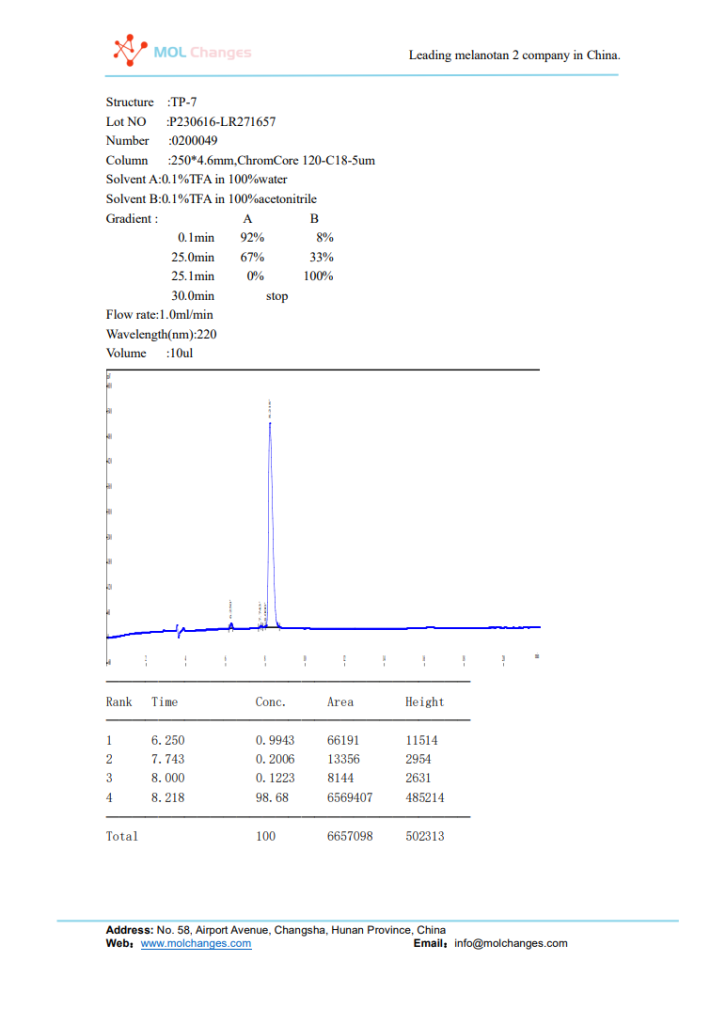
MS 테스트 보고서
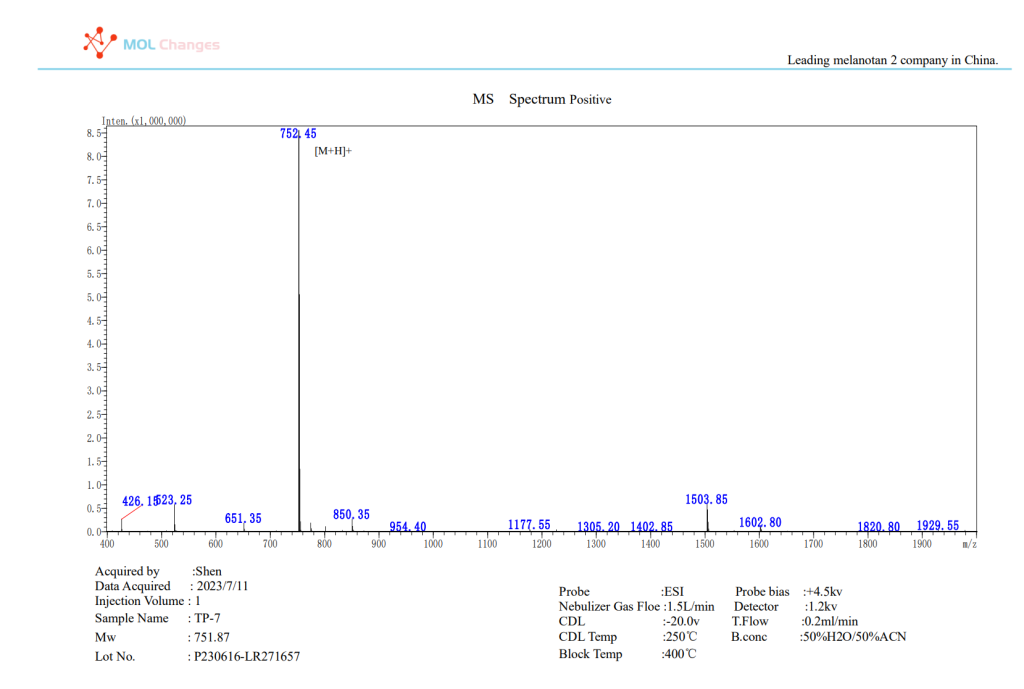
제조업체 정보
- 셀랭크는 MOL 체인즈 공장에서 제조합니다.
- 셀랭크 공급업체 MOL 변경.
- 허용되는 최대 생산량: 100,000병.
- 콘텐츠 표준: 순 펩타이드.
- 순도: 모든 제품 ≥98%.
- 사용자 지정: 1mg-1g 크기 맞춤 설정 가능

